Humans have pondered these questions about the Universe, to one degree or another, for at least several hundred years, perhaps thousands of years, yet despite the advances in society, science and our overall understanding of the Universe, we are still no closer to answering these questions, or are we closer than we think?
To answer them we need to look at life on Earth in a holistic way, humans tend to look at it in narrow focus, either homocentric or centred on some other subjective aspect, but is this really helpful, does it allow us to “see the wood for the trees?”
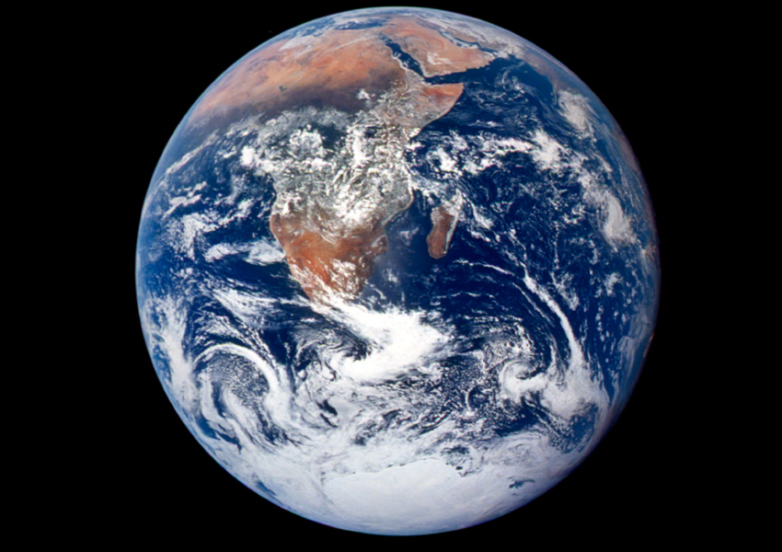
The perennial question is “How does life start?” Obviously, we can only ever use educated guesses for this until we know far more about the process, but it is likely that whenever the environmental conditions are stable, and the chemistry has the right mix, life, given time, will emerge, even if it is simple single celled organisms, although we are finding out that simple does not apply to some of these organisms.
Does life stay simple or does it naturally follow that life, given time and the right conditions, will evolve, then evolve into ever more complex life forms that impact their environment and modify the atmosphere to suit ever more complex life so the whole process becomes symbiotic, as has happened here on Earth.
It is believed that just after the Earth formed it was about 10% more massive than today, that it was struck by a planetary body of similar mass to modern Mars, stripping off a large part of the crust, vapourising the surface and creating a ring of material that went on to form the Moon (very simple explanation). The Moon originally formed much closer to the surface than it is today, about 16-20,000 miles above the surface. This would have created huge tides on the young Earth, both in the Oceans and the molten mantle of the planet, causing earthquakes and encouraging volcanic activity.
This young Earth would have been a torturous place for life to develop in, yet despite the hurdles, it appears life begun shortly after this massive event in our planet’s history. We have to remember that this early Earth was far different to the Earth of today, the atmosphere was toxic to modern life, with perhaps the exception of some extremophile bacteria and algae. If life can develop, evolve and not only survive but thrive under these conditions, then it is highly likely that life is far more ubiquitous and resilient than is often considered.
So, can we use Earth as an example of life? Personally, I say the answer is an irrefutable Yes, even though most researchers say we cannot because it is the only example; if we take off our blinkers, we realise that life has started, in several ways, more than once on this planet, and it is vitally important to remember the environment we currently have on this planet is as much the product of life and not simply life being the product of the environment.
You may be thinking that is an odd statement to make, but the current base chemistry of our atmosphere is only around ¼ the age of the planet, up until around 700 million years ago the chemical composition of the atmosphere was very different, in fact, 99% of species alive on Earth today would die if they were put into an environment mimicking the atmosphere on Earth only a mere 700 million years ago, it would perish in short order.
This is not to say Oxygen did not exist, it did, and in fact the “Great Oxidisation Event” recently underwent a reset and was pushed back from 2.3 Billion years to 3.0 billion years before now. (1)
However, we also know that whilst cyanobacteria and their brethren were producing oxygen, that was a major atmospheric pollutant, some 3.7 billion years ago (2), it took between another 1. 2 and 1.8 billion years for plant life to make use of this atmospheric Oxygen using photosynthesis in the form of Red Algae. The accepted age is 1.2 billion years, although Swedish researchers believe they have discovered some in India that pushes this back another 400 million years or more.
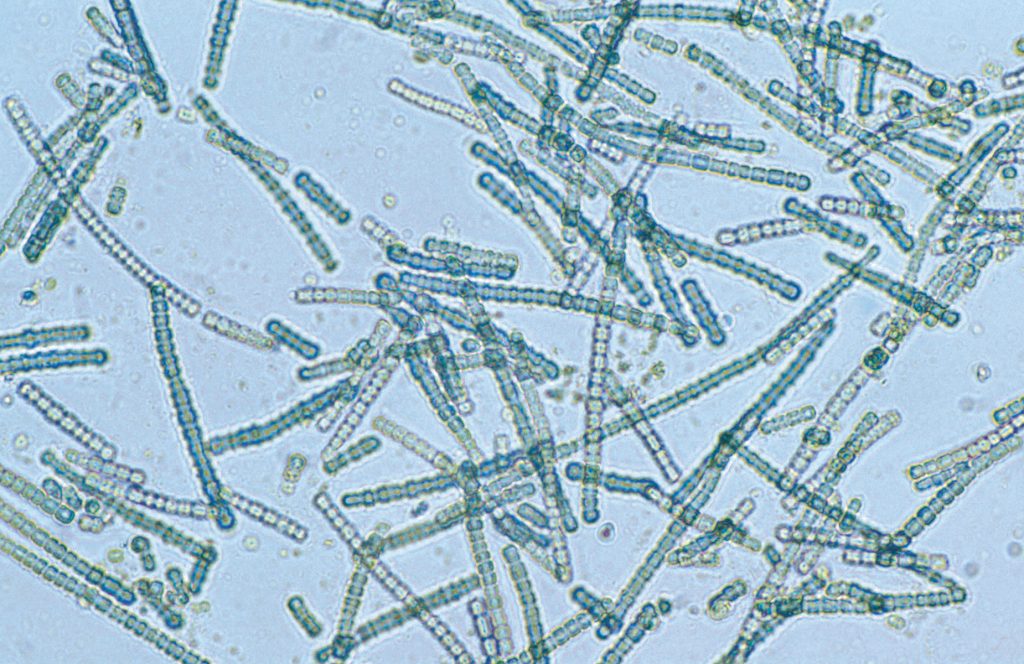
The whole point is that the chemistry of our planet’s atmosphere has been constantly evolving over geological history. Before the level of Oxygen reached a critical point (between 1.85 and 0.85 Billion years ago) there was no Ozone layer in our atmosphere, life back then had to deal with very harsh conditions compared to today, yet it survived, thrived and flourished regardless, we know this to be true because the story of live just became more and more complex over time.
We know that early life had to tolerate conditions on the planet that would kill all but the most extremophile lifeforms alive today, and even then, some of those would likely not survive. The surface of the planet was highly active, the late heavy bombardment had taken place whilst life got a foot hold, it continued as did life, despite the challenges this period forced onto it, and it didn’t just survive, it thrived. Life thrived in toxic environments, just as many do today.
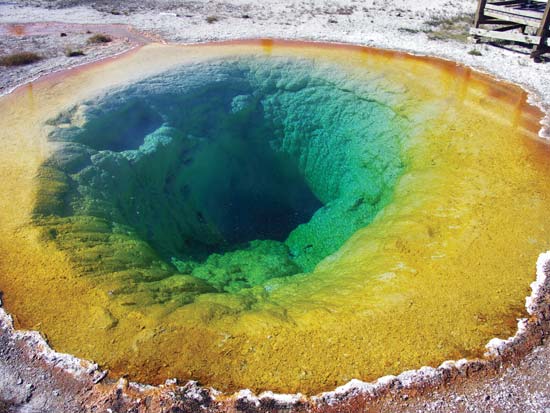
Mars, Venus, Europa, Callisto, Titan and even possibly Ganymede may harbour environments that, in theory at least, are capable of supporting simple life. Mars has an enigma regarding excessive (CH4) Methane in the atmosphere which now appears to be seasonal, ruling out most, if not all, non-life related explanations, although much more research is required to resolve the mystery. Then there are the issues surrounding the tube-like structures that are indicative of being a fossil from extinct life, although, once again much more research is required to confirm if it is life related or has a more mundane explanation as the majority of researchers hold. There is growing evidence that perhaps Mars may have once supported simple life, or even may still do today beneath the surface of the planet.
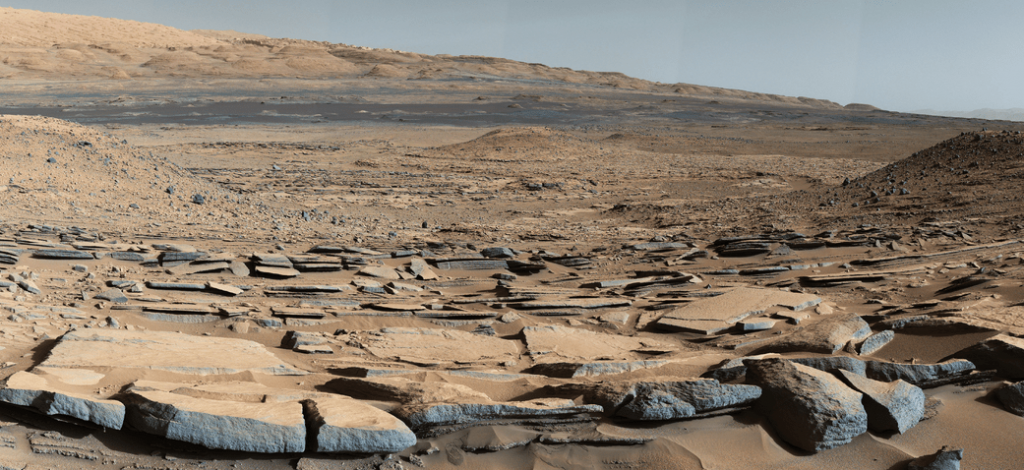
Proving life begun in an environment on second body in our system, whether extinct or extant, opens up the discussion on the extent life may go to in order to establish itself or simply survive.
My gut feeling is that if life started on Mars, or another body in the solar system, then it is likely still there because the one thing life on Earth has demonstrated is its tenacious ability to evolve and survive.
This raises an interesting question. In the early days of the solar system it is posited that Venus and Earth were more alike than they clearly are today, in fact, in the early history of the two planet’s it is likely life had a start on both, Venus being that much closer to the younger and less luminous Sun, would have been warmer than early Earth, if it was similar to Earth, as the evidence suggests, then it seem inconceivable life would not have started there too. We know the surface of Venus is not conducive to life today, but Venus would not have changed overnight, it may have taken a billion years to move from conducive to hostile to life, that is plenty of time for simple life to have evolved to live below the surface of the planet where conditions would clearly be more conducive, we see life brought up from deep drill sites and miles below the surface on Earth, so why not Venus?

So now we are looking at a situation where it is theoretically possible life, in one form or another, exists on no less than 3 of the Solar systems major planets, then we need to look at the major moons of at least two of the gas giant worlds of our solar system.
At Jupiter we have good evidence of salty oceans existing below the surface of Europa, Callisto and possibly Ganymede, then at Saturn we have Titan, an interesting world at the best of times, but recent research implies it too may have an ocean below its strange surface.
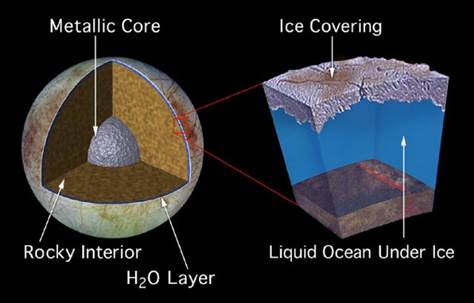
Obviously, life within these oceans has to overcome some serious hurdles, but it seems that life on Earth has faced, challenged and beaten these same challenges several times in the history of life on our planet, so there is good reason to think some form of basic life may exist in these oceans.
This then opens up the can of worms, let’s, for discussions sake, assume we have 7 bodies in our system that supports some form of life, this increases the odds of life on extrasolar planets immensely and it makes a mockery of the alleged “goldilocks” zone. Based on research in the last few years this means there could be several hundred billion bodies in our home galaxy that harbours life in one form or another. Whilst our solar system may be atypical, let’s assume that 1/7th of all bodies with life develop complex, multicellular life, and it is from multicellular life that technical societies may develop.
Intelligence is an interesting concept, humans consider themselves special, different from nature’s other creatures, but in reality, we are as much part of the tapestry of life as any other creatures that has, does or will live on Earth.
What is intelligence? Some will say our ability to communicate is what sets us apart from other creatures, but is this true, fair or even accurate? All life communicates in one way or another, the cells of our bodies communicate, birds sing, lizards hiss and display, crabs display, and many higher mammals use sound, sight and physical contact cues to communicate. Humans may not understand this communication, and human communication is certainly complex, but so are the songs and language of the various members of the Dolphin family and larger Whales.
When you look at humans in the context of life on Earth and not separate from it, then there are two traits we possess that, in my humble opinion, sets us apart from other animals, and I suspect may be the same for other dominant species on exo-planets. For me, the traits that truly defines humans is adaptability and abstract thinking. Now it’s possible the latter is a product of higher intelligence and may be possessed by Dolphins, Whales and even higher primates, but human’s sheer adaptability is staggering compared to the rest of nature. We have managed to survive natural events that would kill other species because of our adaptability, yes intelligence may play a role here too, but it is likely the two go hand in hand.
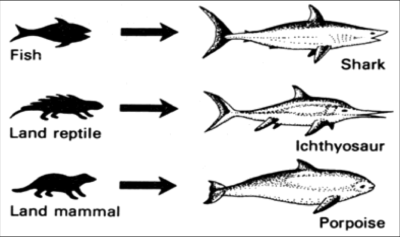
When you look at humanity as an animal, uncomfortable for most people, then you realise that we are not really any different to other life on Earth. We out breed other large mammals, our omnivorous nature means we find food anywhere and are not constrained by the conventional controls on herbivores or carnivores, numbers give us a distinct advantage, but we are nothing special overall.
So, the question is then, how common is intelligent life in our galaxy?
Well, let’s assume for arguments sake, that the galaxy contains as many planets as stars, so about 400 billion, and there are another 100 billion moons large enough to have environments where life can arise.
If we say that 1/10 of all planets and 1/10th of all the possible moons actually allow life to arise, that gives us 40 billion planets and 10 billion moons upon which life exists. Based on our example regarding the solar system then 1/7th of all these bodies will evolve multicellular life, this would give us figures of 5.71 billion planets and 142,857,000 moons upon which multicellular life may exist. This is interesting, based on the average accepted scale of the Milky Way galaxy, with 5.71 billion planets then that would give us a planet with multicellular life on it about every 40 light years in any given direction.
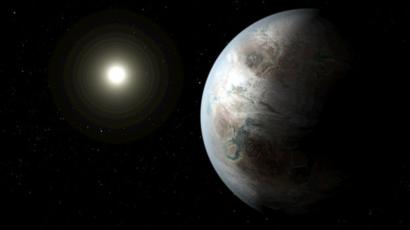
It orbits it’s Red Dwarf parent star at around 21 million miles, orbiting in 33 days withing the habitable zone for this star.
At 124 light years, we are not visiting anytime soon.
With this in mind we need to understand how often multicellular life throws up a species that becomes technical and developed into a complex society as we have seen humanity achieve in the last 8000 years. That society need not have developed radio communications or even industry, but could be capable and on the way, as humans were several thousand years ago.
This is potentially a minefield of thought, we truly only have one example of this, humanity, but is this single example as limiting as we think it is. Let’s go back to how humanity fits in to the animal kingdom. If humanity is truly not as unique as many like to think then we must conclude that were multicellular life evolves and where the environmental conditions are stable over extended periods, then eventually a dominant species will evolve and become technically advanced given enough time.
We assume that humans are the only species to have developed the complex type of societies we have, but nature is very good at erasing evidence of the past. Palaeontologists studying the modern extinction of mammals, believed to be caused by the presence and actions of man, have found the species that are most likely to go extinct also appear to be the ones who rarely leave behind a trace. One possible reason for this bias, a team led by Roy Plotnick, a palaeontologist at the University of Illinois, Chicago, found is that smaller species are less likely to wind up in the fossil record, as are those with smaller ranges. Tiny species are less likely to make it through the sedimentary processes that turn remains into fossils—and species with small ranges are less likely to live in the places where those processes happen. Extinction of those species would then be missing from the fossil record, thus there are likely huge gaps in the fossil record that could include species we had not even considered possible, such as an earlier intelligent species that began or did dominate the Earth long ago, although I accept this is unlikely with current evidence.
This then opens the door to the possibility (unlikely I accept) that nature could have thrown up earlier species with similar intelligence and societies to humanity, but nature removed them from the game. Is it possible we could simply be the latest high intelligence species in the last 600 million years? We simply do not know for sure, although it is unlikely, it is not impossible considering how fast genetic changes in species can occur when environmental conditions dictate for survival.
Returning to technically advanced species evolution, let’s assume that at any one point in time then 50% of multicellular life systems throw up higher intelligence capable of evolving technology, and that 10% of this number actually produces an advanced society.
Based on the figures we have, that gives us a possible 285 million planets and 7.14 million moons upon which advanced societies could well exist. How many then go on to develop actual technology? There are various reasons to think that not all will achieve this ability, environmental, natural, social or even religious restrictions may constrain some advanced societies. We have seen this on Earth with humans, without outside interference there are many societies on Earth who still live a “stone-age” or hunter-gatherer existence, and many still would if more advanced societies had not interfered.
So, let’s say that only 10% of advanced cultures go on to actively develop technology, an understanding of science and what many may consider a technical society.
If my figures are even in the ball park, and I accept there is a lot of guesswork here, then our galaxy may contain up to 28 million planets and 700,000 moons with societies who possess technology and an understanding of science. Obviously, these societies would be at various states of development, from the basic level, where humanity was several thousand years ago, to societies who may have had technology for tens of thousands of years.
Now let’s accept these figures as reasonable, this creates a possible solution to our question “Where are they?”. At these figures, given the scale of the galaxy, it means one of these societies will not be closer than around 350 light years, or a volume of some 4.29×107 light years. It gives an answer about them hearing our pitiful radio transmissions from years ago and also possibly why we are not detecting them either.
Clearly making any assumptions about life is fraught with many pitfalls as we know so little about its origins, so unless or until we are able to demonstrate how common life is, all of this is guesswork.
My personal feelings are that life is ubiquitous, where bodies evolve with complex chemical mixtures, sources of energy and a level of stability, then life will eventually arise. If the environment on that body is stable over geological timescales, has sufficient resources and energy to support the evolution of complex multicellular life, then it will arise, after that nature will do whatever it wants.
We have to remember that life changed the environment on Earth, it poisoned the atmosphere with molecular Oxygen around 2-2.5 billion years ago. This created the Ozone (O³) layer in the upper atmosphere that may have allowed for the development of higher forms of life, the reduction of UV radiation stopped breaking down cell walls and thus allowed development which allowed multicellular life.
Perhaps this is actually a natural process that may turn out to be universal, the first life on a body starts by breaking apart CO and CO², releasing the Oxygen as both gas and molecular form, using carbon to build structures to continue the process. Is this basic form of self replication truly life? Maybe we are thinking of these basic stages incorrectly, perhaps they are simply complex chemistry and not life at all, just the required chemistry to get to the stages where these simple cells unite and start to look like life.
The future is there for us to make serious progress, we need to find ways to dig into Mars in numerous locations to ascertain if life exists below the surface, we need to develop missions to Europa, Ganymede, Callisto and Titan that allow us to investigate their oceans to find out if life has started there. Venus is the largely forgotten world, but we need to develop missions capable of spending extended periods of time on the surface and inside the atmosphere of Venus, perhaps getting below the surface to protect it from the heat and crushing pressure and being in a position to search for signs of subsurface life.
Finding life, even the most basic form of it, on/in a body other than Earth will be one of, if not the, most important events in the history of mankind. It will demonstrate that life is far more common than considered my many, may help society to rethink itself and shore up some divisions in wider society, even, possibly, stop some religious animosity because life on another body would destroy many of the most basic tenets of all the major religions. Perhaps this will see us evolve our society and allow us to elevate to the next step.
This brings us to the “can we communicate” and “can we meet” alien life. Clearly, if there is lesser forms of life in the solar system then the meeting is possible, with caveats for both their and human safety, as for communicating, well that is unlikely unless there is a technological society hiding we have not discovered yet…please, don’t hold your breath on that though.
When we talk of communication and meeting life from other worlds, we are clearly talking about species similar to humanity, and here it becomes highly complex.
Unless they use the exact same technology as us, then immediate communication would be difficult at best, but likely impossible. Our communications technology has evolved dramatically in the last few decades, and that process shows no signs of abating. This makes communicating with technology from 30 years ago, or older, virtually impossible, so communicating with a technical society that is advanced of us will be all but impossible. We may detect evidence of signals that have no natural explanation, they may detect ours in a similar way, but unless we can decipher what that signal is then we have no way of knowing what that signal means or how to respond…short of sending back a recording of the signal. Whilst I fully support the efforts of SETI, and have been a participant in SETI@home since April 1999, I feel our chances of success are slim to zero if I’m honest, but slim is better than zero, and if we don’t try our chances will always be zero.
Can we actually meet technically advanced aliens? Well, with our current technology we may as well conclude that it is impossible for us to go to them, but what of the chances of them coming here? My personal belief is that no advanced aliens have visited Earth in the last 100,000 years, and personally I don’t feel they ever have. I know there are people out there convinced that aliens are here, they dismember livestock and conduct sexual experiments on under-educated rural Americans, but let’s be honest, if they have the technology to cross the gulf between stars then I think it is safe to assume they are not behaving as claimed.
Without some form of technology from sci-fi, my personal belief is that life is destined to be trapped in the system it evolves in and ultimately will die with its parent star. Many people consider space to be empty, but the reality is very different. Interstellar space is full of material that ranges from sub-atomic particles to giant planets and brown dwarves unbound to any star. Any body that orbits the Galactic core does so between 180 and 254 km/sec. That velocity imparts a huge amount of kinetic energy on any body, and when that body impacts another the resultant energy release will be massive and devastating.
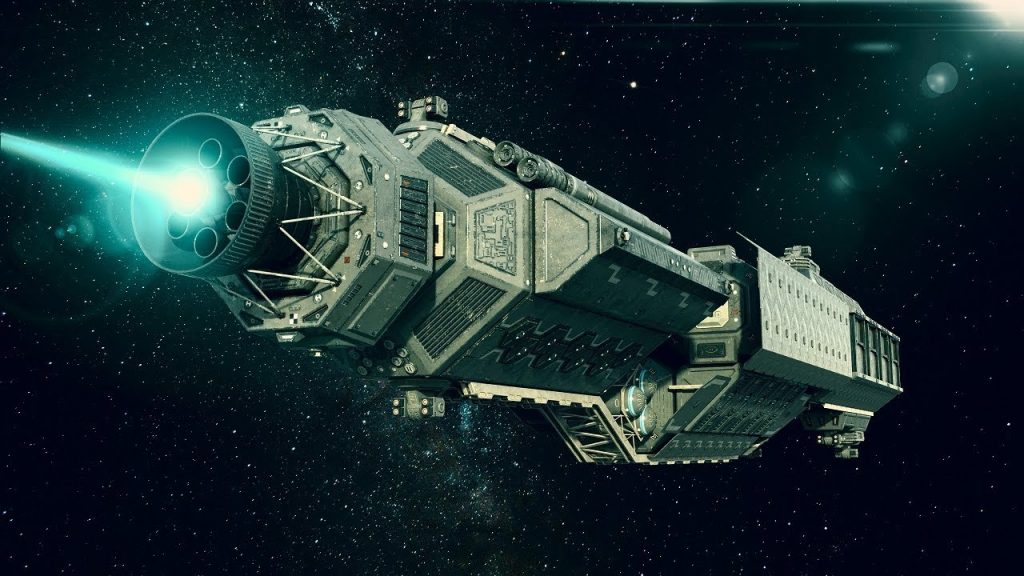
Let’s assume we build a generation ship with a mass about 200,000 tonnes that travels out of the solar system at 200km/sec, after 500 years it encounters a small nickel-iron rock weighing in at 100kg and travelling in the opposite direction at 230km/sec. The impact velocity would be 430km/sec. The impact forces involved are truly astronomical, the problem increases exponentially as the mass of an object increases. Clearly, truly large bodies could be detected some distance off, but the damage sustained by bodies between 0.5 kg and 10,000kg would likely devastate any man-made vessels unless they had some form of outer defences or sci-fi like shields..
Crossing the gulf between stars is not for the faint hearted or the foolhardy, it requires a lot of technology, not just propulsive technology, but once we put humans in these vessels, they require defensive systems the like of which we can only dream about with current technology. Further, we need to be able to keep them alive, they need food, water, entertainment, they need to be a diverse population to prevent inbreeding, they need everything a decent size western town on Earth has, but on steroids.
Here then lays the dilemma, faced with such huge dangers, will any race risk lives to cross the gulf between stars or will they simply choose to exploit all the resources of their home system until they either die off naturally or their star makes continued residence untenable. Faced with the realisation that exchanging messages with another race is impractical due to time delays, and realisation that “manned” interstellar travel is simply impractical will they then continue to look for alien life, or will they simply dedicate all their energies to surviving in their system and how to survive the death of their host star.
The reality will vary from species to species. Some will be introverted, some will be extroverted, the majority, somewhere between the two, they will likely be restricted to their home system, but perhaps actively search for life in other systems, perhaps by active broadcasting or by secondary broadcasting.
We, humanity, have a huge amount to learn, our technology will give us answers to questions that are currently only semi-educated guesses.